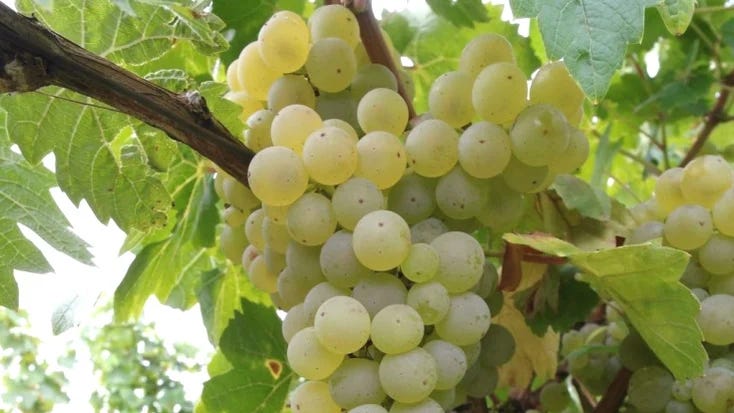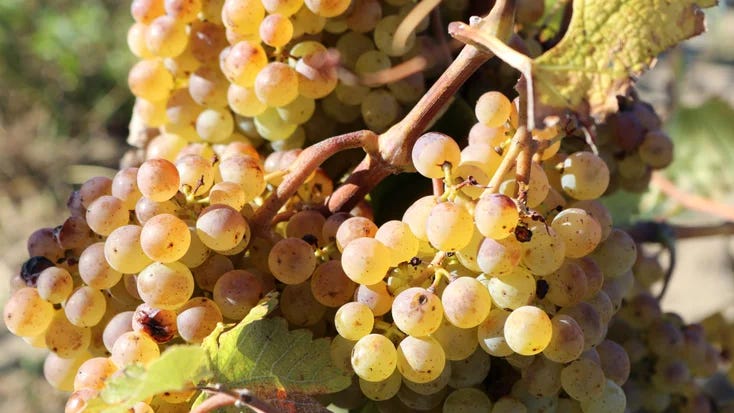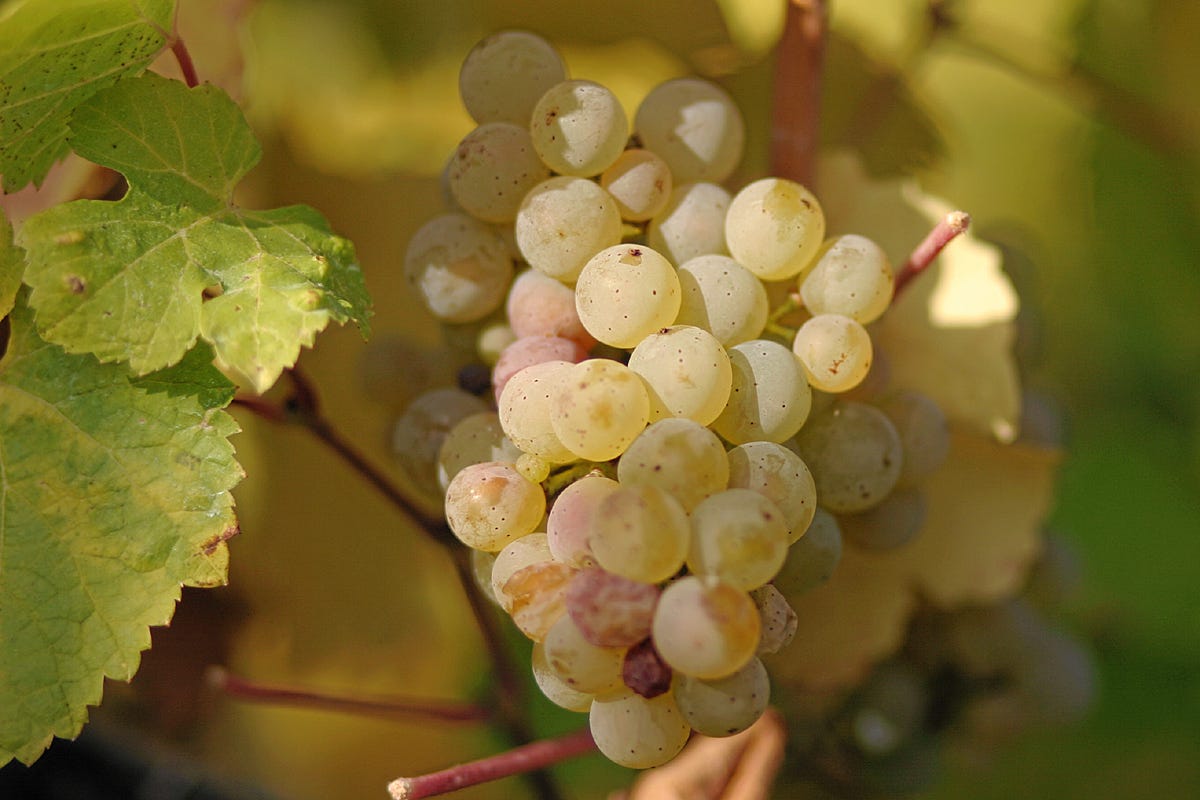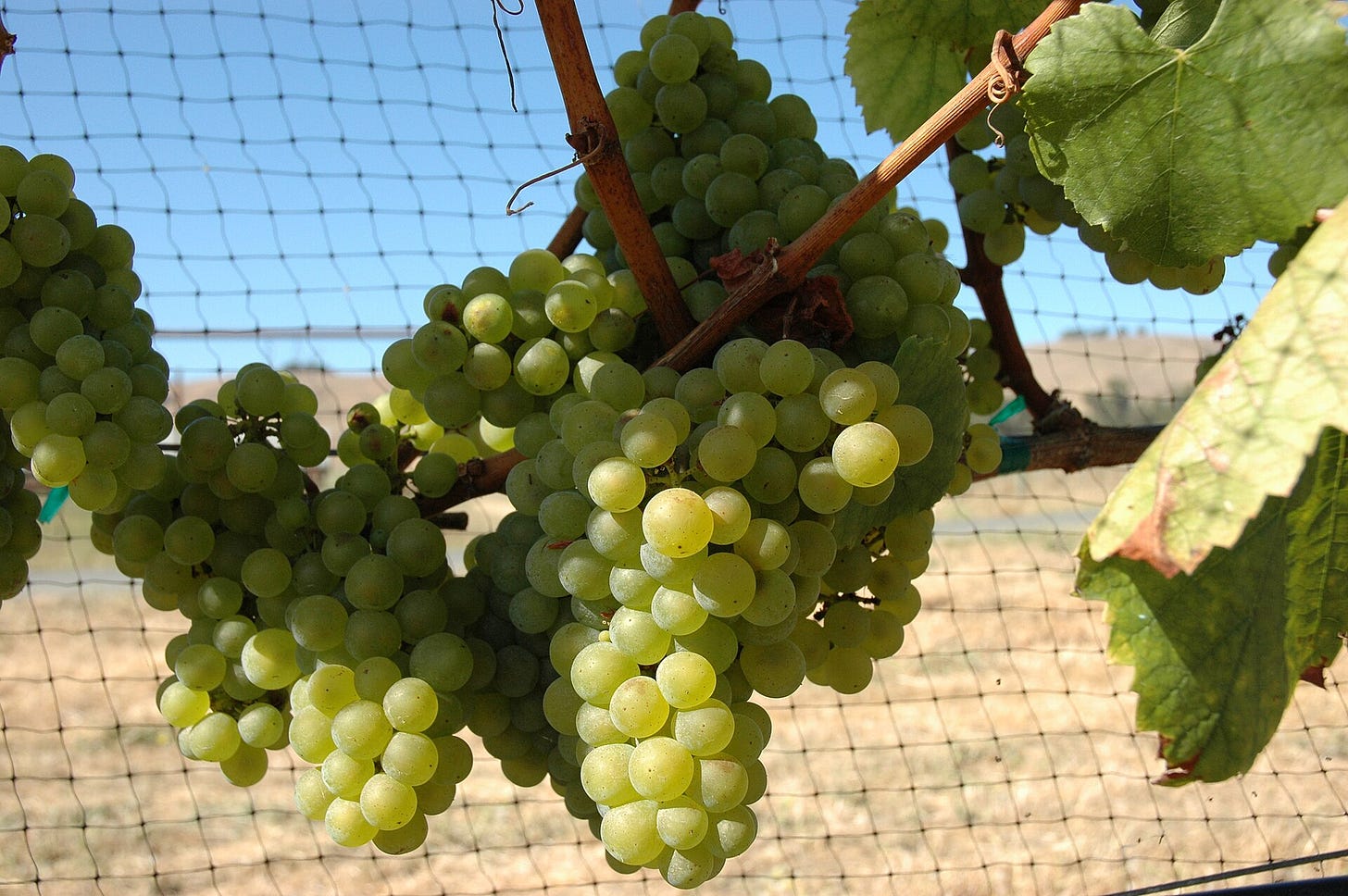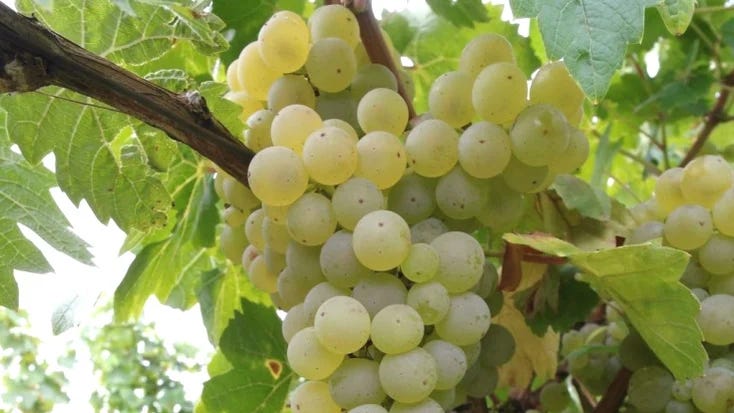
by lspeed | Jul 27, 2025 | DECODING GRAPES: FROM VINES TO VINTAGE
Known as a grape displaying “Aromatic Precision from Germany”, Scheurebe is a white variety developed in Germany in the early 20th century. Though not widely planted, it produces distinctive wines with firm acidity and a broad stylistic range, from dry and citrus-driven to richly sweet. Routinely overlooked in favor of Riesling, Scheurebe has found a quiet following among those interested in expressive, site-sensitive white wines.
Origins and Development
Scheurebe (pronounced shoy-ray-buh) was created in 1916 by Dr. Georg Scheu at the Viticultural Institute in Alzey, Rheinhessen. Originally believed to be a cross between Riesling and Silvaner, later DNA analysis revealed that the second parent was not Silvaner, but a still unidentified wild vine. The goal of the cross was to retain Riesling’s acidity while enhancing aromatic intensity and ensuring earlier ripening.
The result was a variety capable of producing wines with bold aromas – grapefruit, blackcurrant, passionfruit, and spice – paired with Riesling-like structure. Early adoption was modest, and for much of the 20th century, Scheurebe’s reputation was held back by poor vineyard management and an emphasis on sweet, mass-market wines.
Terroirs and Regional Expression
Scheurebe remains primarily planted in Germany, where it occupies a small share of vineyard area. Fewer than 1,500 hectares are planted in total, and its key regions include Rheinhessen, Pfalz, and Nahe.
-
Rheinhessen offers a broad stylistic range, with loess and limestone soils producing both dry and sweet examples.
-
Pfalz, one of Germany’s warmer wine regions, yields fuller-bodied Scheurebe with fruit notes.
-
Nahe, with cooler microclimates and volcanic soils, tends to produce wines with sharper acidity and citrus-driven aromatics.
For all regions, ripeness management is crucial. Scheurebe requires enough heat to avoid green, herbal tones, but quickly tips into overripe territory if not handled skilfully.
International Plantings
Outside Germany, Scheurebe remains rare. Austria grows small amounts, particularly in Burgenland, often used for sweet wines. There are also minor experimental plantings in Switzerland, California, and New Zealand, though none have gained significant traction. The variety’s strong aromatic profile makes it technically interesting, but it has yet to establish a clear identity outside German-speaking regions.
Styles and Structure
Scheurebe performs well across a range of styles. Dry examples are firm and food-friendly, often compared to Sauvignon Blanc for their sharp fruit and herbal notes. At the other end of the spectrum, Scheurebe can be used in late-harvest or botrytized wines, where its high natural acidity balances concentrated sweetness. Sheurebe has shown to be capable of producing serious, age-worthy wines. In the right hands and the right site, it offers clarity, tension, and character. Worth a try, if you can find it.
Image Credit: https://www.wine-searcher.com
_ _ _
© CHURRASCO PHUKET STEAKHOUSE / ALL RIGHTS RESERVED
Reprinting, reposting & sharing allowed, in exchange for a backlink and credits
Churrasco Phuket Steakhouse serves affordable Wagyu and Black Angus steaks and burgers. We are open daily from 12noon to 11pm at Jungceylon Shopping Center in Patong / Phuket.
We are family-friendly and offer free parking and Wi-Fi for guests. See our menus, reserve your table, find our location, and check all guest reviews here:
#Churrascophuket #jungceylon #phuketsteakhouse #affordablewagyu #wagyu
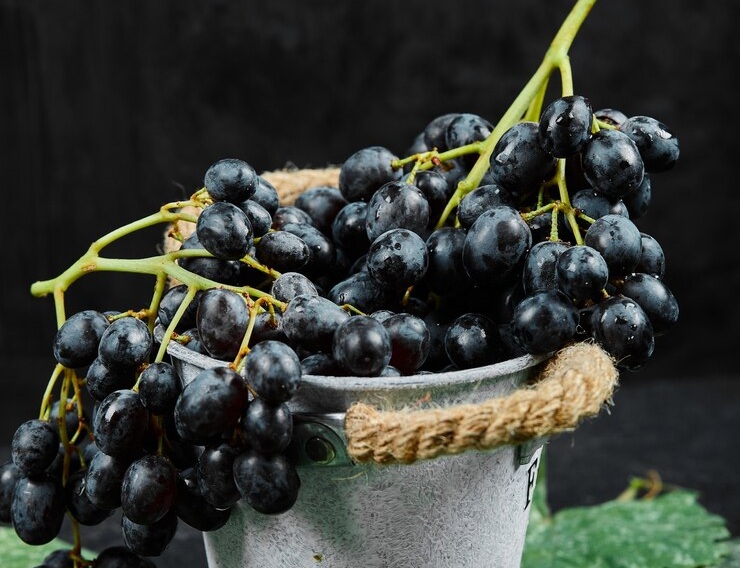
by Ross Kingsley | Jul 13, 2025 | DECODING GRAPES: FROM VINES TO VINTAGE
Merlot, one of the world’s most beloved grape varieties, is a red wine staple celebrated for its soft texture and versatility. Its name, derived from the French word for blackbird (merle), reflects its deep, dark color and the bird’s fondness for the grape. To truly appreciate this varietal, it’s worth exploring its origins, history, notable wines, and global reach.
Origins and History
Merlot originated in the Bordeaux region of France, where it thrives as one of the primary grape varieties in the famed Bordeaux blends. The first recorded mention of Merlot dates back to the late 18th century when a French wine official noted its quality and early ripening characteristics. Over the years, it became a cornerstone of winemaking in Bordeaux, particularly on the Right Bank, where it dominates blends from iconic appellations like Saint-Émilion and Pomerol.
Merlot’s adaptability and reliability gained traction outside France in the 20th century, making it a global phenomenon. Its soft tannins and approachable flavors allowed it to stand out in the growing wine markets of the United States, Italy, and South America.
Famous Wines Featuring Merlot
Some of the world’s most prestigious wines feature Merlot prominently. In Bordeaux, Château Pétrus from Pomerol is perhaps the ultimate expression of the grape, often commanding some of the highest prices in the wine world. Château Cheval Blanc, a Saint-Émilion blend, also highlights Merlot’s ability to contribute to a wine’s elegance and aging potential.
Outside France, Merlot shines in varietal wines from California’s Napa Valley, where producers like Duckhorn Vineyards have gained acclaim. In Italy, it is a key component of “Super Tuscans,” where it complements local varietals like Sangiovese.
Geographical Reach
Merlot’s adaptability has enabled it to flourish in diverse climates. France remains its spiritual home, but it has found success in regions as varied as Washington State, Chile, Argentina, and Australia. In cooler climates, Merlot produces wines with red fruit and herbal notes, while warmer regions bring out its plum, blackberry, and chocolate characteristics.
Why Merlot Matters
Merlot’s versatility makes it a favorite for wine enthusiasts and winemakers alike. Whether in a complex Bordeaux blend or a fruit-forward varietal wine, Merlot offers something for everyone, demonstrating why this grape continues to be a cornerstone of global winemaking.
Image Credit: Freepik.com
_ _ _
© CHURRASCO PHUKET STEAKHOUSE / ALL RIGHTS RESERVED
>>> Reprinting, reposting & sharing allowed, in exchange for a backlink and credits <<<
Churrasco Phuket Steakhouse serves affordable Wagyu and Black Angus steaks and burgers. We are open daily from 12noon to 11pm at Jungceylon Shopping Center in Patong / Phuket.
We are family-friendly and offer free parking and Wi-Fi for guests. See our menus, reserve your table, find our location, and check all reviews here:
https://ChurrascoPhuket.com/
#Churrascophuket #jungceylon #phuketsteakhouse #affordablewagyu #wagyu
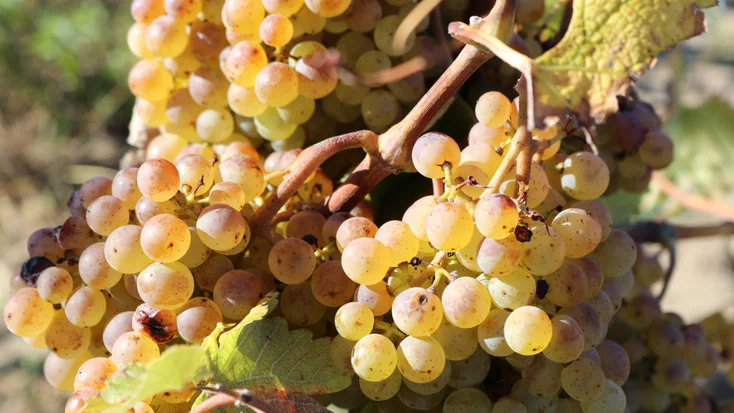
by lspeed | Jun 29, 2025 | DECODING GRAPES: FROM VINES TO VINTAGE
Sylvaner doesn’t try to impress with flashy aromas or bold flavors. Instead, it offers quiet charm — clean, balanced, rooted in the places it grows best. Once one of the most planted white grapes in Germany, Sylvaner has slipped into the background, but it’s never gone completely away. In the right hands and soils, it can still produce food-friendly and distinctive white wines in Europe.
Where It Comes From
Despite myths tying it to Transylvania, modern DNA testing shows it’s a cross between Traminer and a nearly forgotten Austrian variety called Österreichisch-Weiss. First recorded in 1665 in Austria, it quickly made its way into Germany and later into France and Switzerland.
For a long time, Sylvaner was widely planted in Germany, especially before Riesling took over as the country’s signature grape. In the mid-20th century, it suffered a reputation hit during the era of bland, bulk wines, but in Franken and Alsace, it quietly held on.
Where It’s Grown Now
-
Franken (Germany): Grown on limestone soils, Franken Sylvaner can be dry, focused, and sometimes even age-worthy. Look for it in the squat, round Bocksbeutel bottles.
-
Alsace (France): Often overlooked in favor of Gewürztraminer, Alsatian Sylvaner is lean, mineral, and good with local dishes like onion tart.
-
Valais (Switzerland): Known there as Johannisberg, Swiss Sylvaner can be broader, fuller, and sometimes sweet.
-
Austria: Small plantings remain, especially in Lower Austria. Now now more of a curiosity than a staple grape.
What It Tastes Like
Sylvaner wines are typically dry and medium-bodied. They often show notes of green apple, pear, fresh herbs, and sometimes a touch of white pepper or hay. The acidity is usually moderate, and shows texture and balance rather than aromatics. Good Sylvaner from limestone-rich soils also carries a clean, stony character—a kind of quiet minerality that shows especially well with food.
Styles and Uses
-
Everyday Dry White: Crisp, clean, and easy to drink young.
-
Site-Driven Wines: In Franken, Sylvaner from old vines and top vineyard sites can be complex and built to age.
-
Off-Dry and Sweet: Rare, but in Switzerland and some parts of Alsace, they exist, usually in better vintages with late harvest or botrytis.
Sylvaner will never have the glamour of Chardonnay or the perfume of Sauvognon Blanc, but it rewards with subtlety. It’s a grape with local roots and quiet personality, and worth getting to know.
Image Credit: https://www.wine-searcher.com
_ _ _
© CHURRASCO PHUKET STEAKHOUSE / ALL RIGHTS RESERVED
Reprinting, reposting & sharing allowed, in exchange for a backlink and credits
Churrasco Phuket Steakhouse serves affordable Wagyu and Black Angus steaks and burgers. We are open daily from 12noon to 11pm at Jungceylon Shopping Center in Patong / Phuket.
We are family-friendly and offer free parking and Wi-Fi for guests. See our menus, reserve your table, find our location, and check all guest reviews here:
https://ChurrascoPhuket.com/
#Churrascophuket #jungceylon #phuketsteakhouse #affordablewagyu #wagyu
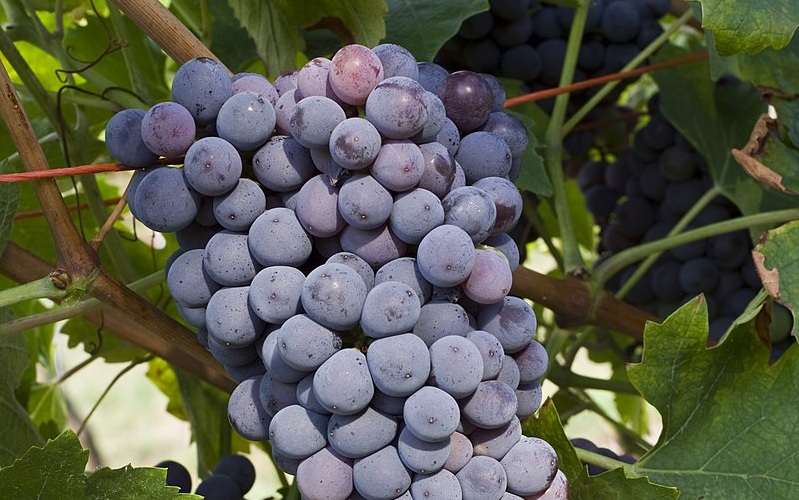
by lspeed | Jun 15, 2025 | DECODING GRAPES: FROM VINES TO VINTAGE
Tucked away in the rolling hills of the Veneto region, Corvina is a grape that rarely takes the spotlight but plays a central role in shaping some of Italy’s most distinctive wines. It’s not as globally recognized as Sangiovese or Nebbiolo, but Corvina underpins the wines of Valpolicella, Ripasso, and Amarone, lending them structure, brightness, and a signature cherry-driven elegance.
This late-ripening, thick-skinned variety thrives in the cool, breezy vineyards north of Verona. The climate, shaped by nearby Lake Garda and the foothills of the Alps, allows Corvina to maintain its natural acidity, a key trait that gives the wines their freshness and balance. It’s a grape that handles the region’s traditional appassimento method remarkably well—a technique where grapes are dried on racks to intensify sugars and flavors before fermentation. The result is a deeper, more concentrated wine without sacrificing structure.
Corvina is rarely bottled on its own. In the Valpolicella and Bardolino zones, it is the dominant grape in blends, typically paired with Rondinella and Molinara. While Rondinella adds floral and herbal tones and Molinara boosts acidity, it’s Corvina that delivers the vibrant red fruit, the texture, and the backbone. In basic Valpolicella wines, this results in a light, easy-drinking red with notes of sour cherry and almond. In more serious bottlings, particularly in Ripasso and Amarone, the grape shows its full range.
Amarone della Valpolicella is where Corvina truly shines. In this powerful, dry wine, made from partially dried grapes, Corvina develops flavors of dried cherry, fig, dark chocolate, and baking spices, with a richness and depth that can rival top-tier wines from around the world. Despite the weight and high alcohol, Amarone retains a sense of balance—thanks again to Corvina’s acidity and structure. In a Ripasso, often called “baby Amarone,” young Valpolicella is refermented on the leftover skins from Amarone production, giving it more depth and complexity without the full power of Amarone. Once again, Corvina is the key ingredient.
Today, a few producers are experimenting with varietal Corvina wines, aiming to showcase the grape’s clarity and finesse outside the blend. These bottlings, often unoaked or lightly aged, highlight Corvina’s fresh cherry fruit, subtle spice, and lifted acidity. They’re approachable, food-friendly, and increasingly appreciated by sommeliers and wine enthusiasts looking for something beyond the usual suspects.
Image Credit: https://wikipedia.org
_ _ _
© CHURRASCO PHUKET STEAKHOUSE / ALL RIGHTS RESERVED
Reprinting, reposting & sharing allowed, in exchange for a backlink and credits
Churrasco Phuket Steakhouse serves affordable Wagyu and Black Angus steaks and burgers. We are open daily from 12noon to 11pm at Jungceylon Shopping Center in Patong / Phuket.
We are family-friendly and offer free parking and Wi-Fi for guests. See our menus, reserve your table, find our location, and check all guest reviews here:
https://ChurrascoPhuket.com/
#Churrascophuket #jungceylon #phuketsteakhouse #affordablewagyu #wagyu
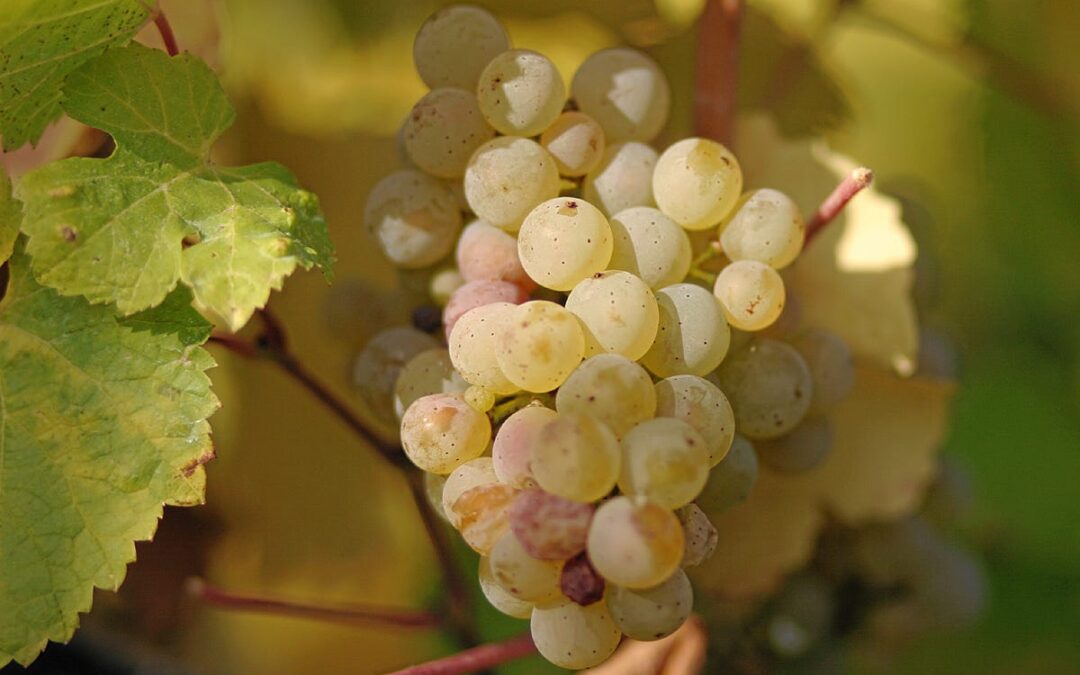
by Ross Kingsley | Jun 1, 2025 | DECODING GRAPES: FROM VINES TO VINTAGE
Early Days Along the Rhine
Riesling is mostly known for bright aromas, lively acidity, and impressive adaptability. Its variety in style – from crisp, dry wines to rich, sweet dessert bottles – is part of the grape’s charm. In an international context, it reflects where it’s grown, giving wine lovers a glimpse into the soils, slopes, and climates behind each glass.
The story of Riesling begins along the banks of Germany’s Rhine River, where the grape was first mentioned in 1435. Its origins are tied to wild vines from the region, as well as two older varieties: Gouais Blanc and Traminer. Germany’s cooler climate, combined with steep vineyards, gave Riesling an environment where it could shine. Over time, winemakers realized that Riesling didn’t just survive in these challenging conditions—it thrived, picking up subtle differences from one vineyard to the next.
Rising Prestige in Europe
By the 1800s, Riesling had built a strong reputation across Europe. Wines from places like the Mosel Valley were highly sought after, and often mentioned in the same breath as some of the top wines of the time. What set Riesling apart was its transparency. Unlike heavier, more robust grapes, Riesling kept its freshness and character, allowing drinkers to taste the unique fingerprint of each region, and sometimes even a particular hillside or vineyard.
Decline & Renaissance of German Rieslings
Despite its earlier acclaim, Riesling’s image took a hit in the mid-20th century, when large-scale marketing efforts pushed inexpensive, mass-produced German wines onto the international market. Brands like Blue Nun and Black Tower became household names, but the focus shifted away from quality toward sweet, simple wines that bore little resemblance to traditional, site-driven Rieslings. For a time, the grape’s reputation, particularly outside of Germany, was closely tied to these easy-drinking but uninspiring styles.
Fortunately, many German vintners never gave up on Riesling’s true potential. Winemakers began working to restore the grape’s reputation by focusing on smaller yields, better vineyard management, and traditional craftsmanship. One of the leading figures in this revival was Dr. Ernst Loosen, whose commitment to making structured, expressive Mosel Rieslings helped reignite global interest in German wine. Thanks to efforts like his, Riesling gradually returned to being seen as a serious and distinctive variety.
A Grape of Many Styles
One of Riesling’s biggest strengths is its versatility. In places like Alsace, France, or in Germany’s drier “Trocken” styles, Riesling offers a clean, zesty profile with notes of citrus, green apple, and minerals. These wines are refreshing and food-friendly, perfect for everything from seafood to spicy dishes.
Riesling also handles sweetness well, and some of its most beloved styles fall into this category. German classifications like Spätlese and Auslese show off ripe fruit flavors balanced by lively acidity. For something even richer, there’s Trockenbeerenauslese, a style made from grapes that have dried and concentrated – on the vine. Then there’s Eiswein, or ice wine, produced when grapes are harvested and pressed while still frozen. The result is an intensely flavorful wine that feels both rich and refreshing.
A Global Citizen
Although Germany remains closely tied to Riesling’s identity, the grape has traveled widely. In Alsace, Riesling takes on a slightly broader, fuller style. In Austria, especially in regions like the Wachau, it often shows more herbal and spicy notes. Across the globe, Riesling has found new homes: Australia’s Clare and Eden Valleys produce famously dry, lime-driven Rieslings; New York’s Finger Lakes region is known for its cooler-climate examples with bright acidity and stone fruit flavors. New Zealand and South Africa have also made Riesling a part of their wine scenes, and Canada, particularly Ontario, has gained attention for both traditional styles and ice wines.
Built to Last
One of the more interesting things about Riesling is how well it ages. Fresh Rieslings are lively and floral, but given a few years (or a few decades), the flavors deepen. Wines can develop notes of honey, dried fruit, and even a slightly earthy, petrol-like character that many Riesling fans find fascinating. Riesling may not always be the flashiest wine on the shelf, but it has a quiet confidence. Whether you enjoy something bone dry, lightly sweet, or rich and mild, there’s likely a Riesling out there to surprises you.
Image Credit: https://wikipedia.org
_ _ _
© CHURRASCO PHUKET STEAKHOUSE / ALL RIGHTS RESERVED
Reprinting, reposting & sharing allowed, in exchange for a backlink and credits
Churrasco Phuket Steakhouse serves affordable Wagyu and Black Angus steaks and burgers. We are open daily from 12noon to 11pm at Jungceylon Shopping Center in Patong / Phuket.
We are family-friendly and offer free parking and Wi-Fi for guests. See our menus, reserve your table, find our location, and check all guest reviews here:
https://ChurrascoPhuket.com/
#Churrascophuket #jungceylon #phuketsteakhouse #affordablewagyu #wagyu
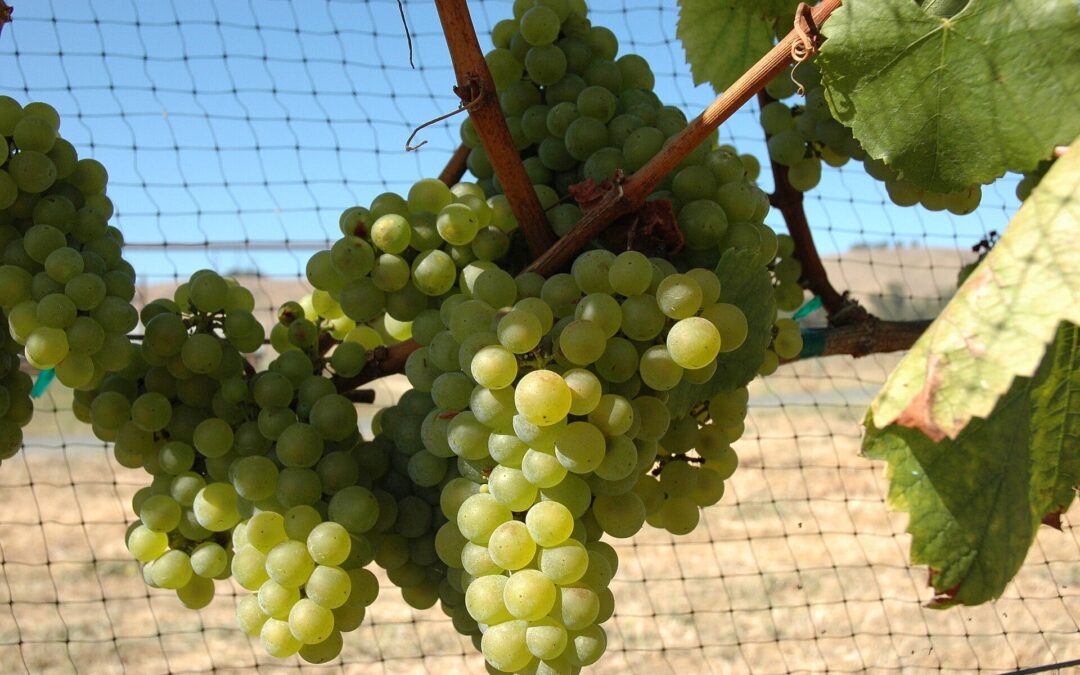
by Ross Kingsley | May 11, 2025 | DECODING GRAPES: FROM VINES TO VINTAGE
Chardonnay, often dubbed the “Queen of White Wines,” is one of the most popular and versatile grape varieties in the world. Its ability to adapt to different climates and winemaking styles has cemented its place as a cornerstone of global viticulture. From its historical roots to its modern-day acclaim, Chardonnay is a grape worth knowing.
Origins and History
Chardonnay originates from the Burgundy region of France, where it has been cultivated for centuries. It is believed to be a natural cross between Pinot Noir and Gouais Blanc, a now-rare grape variety. The first records of Chardonnay date back to the 14th century, though its fame spread far beyond Burgundy over time.
By the 20th century, Chardonnay had become synonymous with high-quality white wines. Its ability to reflect terroir—showcasing the nuances of the soil, climate, and winemaking techniques—made it a favorite among producers and consumers alike.
Famous Wines Using Chardonnay
Chardonnay is the foundation of many iconic wines. In Burgundy, it is the star of renowned appellations like Chablis, Meursault, and Puligny-Montrachet, known for their crisp acidity and mineral-driven profiles. In Champagne, Chardonnay plays a crucial role, often being the sole grape in Blanc de Blancs, offering elegance and finesse to sparkling wines.
Beyond France, Chardonnay has found fame in regions like California, where producers in Napa Valley and Sonoma craft rich, oak-aged styles with notes of butter and tropical fruit. Australia’s Yarra Valley and Margaret River are also celebrated for their distinctive Chardonnays, often striking a balance between fruit-forwardness and minerality.
Geographical Reach
Chardonnay’s adaptability is unparalleled. It thrives in a range of climates, from the cool, limestone-rich soils of Burgundy to the sun-drenched vineyards of Chile and South Africa. Countries like Italy, New Zealand, and Argentina have also embraced the grape, each offering unique expressions.
In cooler climates, Chardonnay often exhibits flavors of green apple, citrus, and white flowers. Warmer regions bring out tropical notes of pineapple, mango, and ripe peach. The winemaking approach—whether unoaked or aged in barrels—further diversifies its profile.
Conclusion
Whether you prefer a zesty Chablis or a creamy California Chardonnay, this grape has something for every palate. Its rich history, global reach, and remarkable versatility make it a cornerstone of wine culture and a true delight for enthusiasts worldwide.
Image Credit: Wikipedia.org
_ _ _
© CHURRASCO PHUKET STEAKHOUSE / ALL RIGHTS RESERVED
>>> Reprinting, reposting & sharing allowed, in exchange for a backlink and credits <<<
Churrasco Phuket Steakhouse serves affordable Wagyu and Black Angus steaks and burgers. We are open daily from 12noon to 11pm at Jungceylon Shopping Center in Patong / Phuket.
We are family-friendly and offer free parking and Wi-Fi for guests. See our menus, reserve your table, find our location, and check all reviews here:
https://ChurrascoPhuket.com/
#Churrascophuket #jungceylon #phuketsteakhouse #affordablewagyu #wagyu


